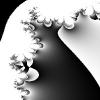Hey there, I guess i can shed some light on this... hehe
One thing you should know, in comparison to Rayman, Ori had a pretty small team. And rather limited ressources, but more ressources in art than in code to generate art.
So many things have been done in a brute force manner, putting artists on solutions, rather than writing tools to do it automatically.
So a lot was just mostly handcrafted.
That said, the artists had a few ways to fake (or lets call it simulate, sounds more professional) lighting.
One way of simulating it was through additive "sprites", they didnt use a sprite system in a classical way, it has been 2d planes with enough geo to minimize overdraw, which could placed and oriented freely in 3d space. They could be manipulated by a master shader, brought to motion, masked and so on.
Which brings me to another option to simulate lighting, imho the most genius one, as I never saw anything similar in any production.
The artists had access to a master shader, they could not only animate sprites, but overlay effects, mask them, animate them, stack them etc.
To make a sprite look shaded essentially.
All this was done manually, which also helped, giving Ori this handmade feel. But I think many of those tasks could be automated, if only there was enough time to set this up. Maybe later :)
here is a quick video done by me to show how a screen gets constructed. but the shading is all already set up, idealyy a set dresser would record the whole process from start to finish to show it properly
hope this helps
cheers
Steffen






